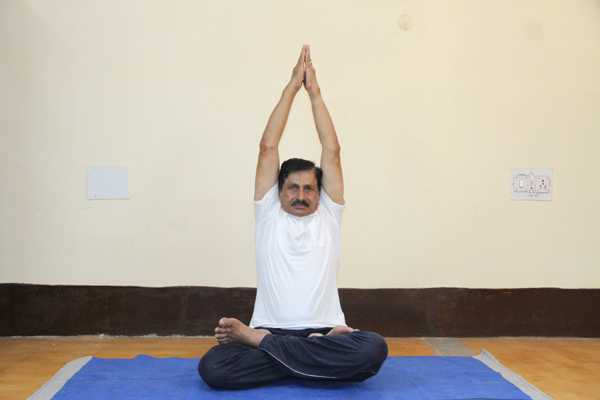.png)
.png)


Parvatasana (pronunciation: Par-vat-aa-s-uh-nah) is one of the 12 basic asanas in Yoga. It is also a part of “SuryaNamaskar” and “Ashthang Yoga”. Parvatasana as the name suggests is a mountain pose performed sitting or standing.
As mentioned earlier, this asana is a part of “Suryanamaskar” and is the fifth pose and eleventh pose.
Step 1: Sit straight on yoga mat in the lotus position with both hands resting on knees palms down.
Step 2: Raise your hands to the front and clasp together with palms outwards.
Step 3: Lift your hands over your head straight with palms facing up.
Step 4: Stretch and hold the position for fe seconds. Repeat multiple times.
Step 5: Stand straight on your yoga mat with legs together and hands to the sides.
Step 6: Lift your hands up and bring them down. As you do bend from waist.
Step 7: Reach to the floor at an angle.
Step 8: Let your legs be straight and firm on the floor. Make sure you do not bend knees.
Step 9: Keep the shape of exactly 45 degrees relative to floor.
Step 10: Keep this position for few seconds and release.
Step 11: Repeat multiple times.